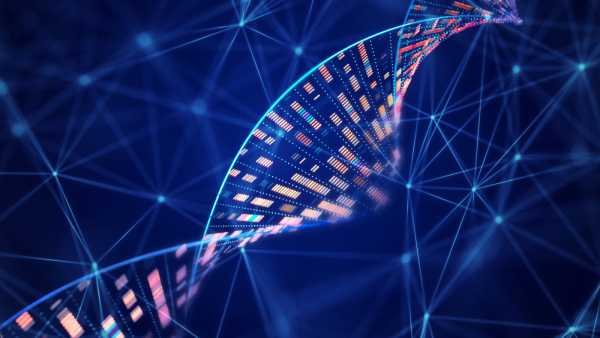
A new study has looked at the 'knots' and 'twists' in DNA that can influence how genes work. (Image credit: Yuichiro Chino/Getty Images)
Scientists have discovered that twisted DNA structures long thought to be knots are actually something completely different.
Inside cells, DNA twists, copies, and stretches. These twists can affect how genes work, influencing which ones are activated and when. Studying DNA’s response to stress can help scientists better understand how genes are controlled, how the molecule is organized, and how disruptions to these processes can contribute to disease.
For years, researchers have used nanopores—tiny holes just wide enough for a single strand of DNA to slip through—to read DNA sequences quickly and inexpensively. These systems work by measuring the electrical current flowing through the nanopore. As a DNA molecule passes through, it interrupts the current in a specific way, corresponding to each of the four “letters” that make up the DNA code: A, T, C, and G.
You may like
-
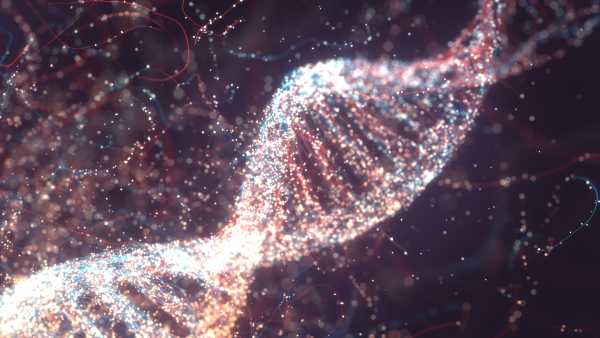
Scientists have discovered how viruses hidden in our DNA control our genes
-
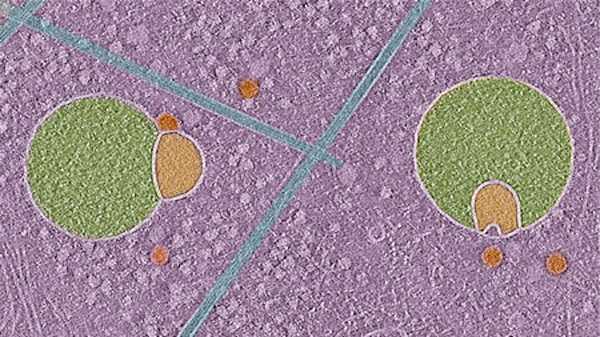
Scientists have discovered a previously unseen part of human cells
-

New study confirms that race and genetics do not mix
Unexpected slowdowns or spikes in this signal have often been interpreted as knots in the DNA. But a new study published August 12 in the journal Physics Review X found that these signal changes could also be a sign of plectonemes — natural spirals that form when DNA twists under stress.
“Knots and plectonemes may look very similar in nanopore signals,” lead author Ulrich Keiser, a physicist at the University of Cambridge’s Cavendish Laboratory, told Live Science. “But they arise from very different physical mechanisms. Knots are like tightly coiled balls; plectonemes are more like twisted springs shaped by torque.”
To study these helices, the researchers passed a strand of DNA through a cone-shaped nanopore in a high-pH salt solution. The solution created electroosmotic flow, meaning the DNA began to rotate as it entered the pore. This movement created a twisting force (torque) large enough to fold the DNA into a helix, Keiser explained.
Keiser and his team also applied an electrical voltage to the nanopore to move the DNA and measured changes in electrical current.
“In these nanosystems, everything is in a state of very high friction, so the DNA moves almost like it's floating through honey,” Keiser said. “It's a very viscous medium, so relatively large forces are pushing the DNA in this spiral motion.”
Image 1 of 3
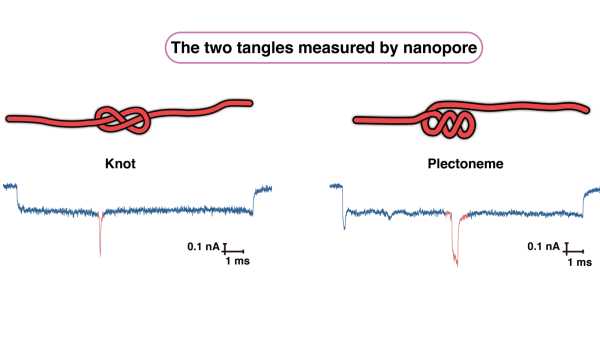
(Image credit: Fei Zheng)
The nanopore signals from the two DNA coils showed distinct dips in the electrical signal, which helped Keiser and his team distinguish between them.
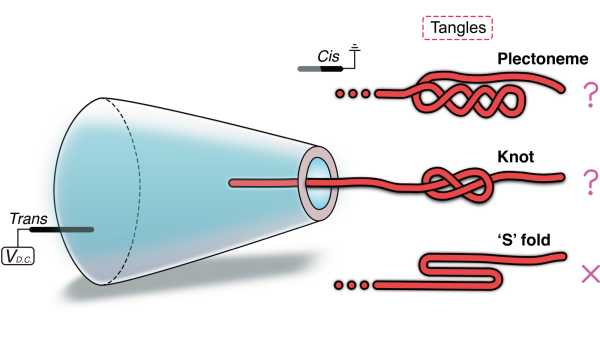
(Image credit: Fei Zheng)
Three putative plexuses—the plectoneme, the knot, and the S-shape—span the nanopore. Tangles like the knots and plectonemes pass through, but simpler folds like the S-shape get stuck or unwound.
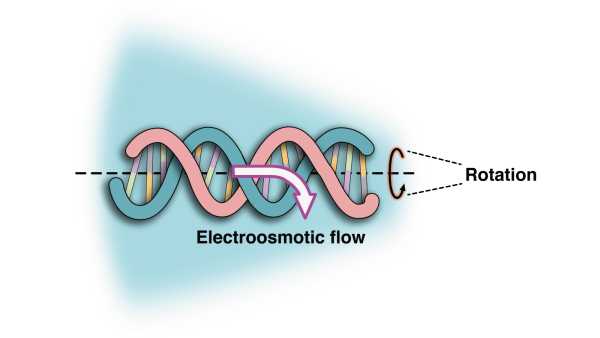
(Image credit: Fei Zheng)
Electroosmotic flow causes DNA to rotate. When DNA enters a nanopore, the fluid flow pushes it forward and causes it to rotate, creating a torque that twists the strand.
The researchers analyzed thousands of such events. While some knots did form during the experiment, they were generally smaller — about 140 nanometers across — while plectonemes were about 2,100 nanometers across. As the voltage applied to the system increased, plectonemes became more frequent due to the greater torque.
To further test how torsion affects DNA behavior, the researchers introduced small breaks, called nicks, into one of the strands of the DNA double helix. These nicks allowed the DNA to rotate more easily and relieve the built-up tension, which in turn led to a reduction in the formation of plectonemes. This confirmed that torsional tension is a key factor in the formation of these structures.
“By controlling the ability of the molecule to rotate, we could change the frequency of plectonemes,” Keiser said.
Although nanopores are very different from living cells, such plectonemes can also form during processes such as DNA transcription and replication. Transcription is the process of copying the DNA code with another molecule called RNA and transmitting it into the cell. Replication is the process of completely replicating a DNA molecule, such as when a cell divides.
“I think that the twisting of the molecules can actually lead to the formation of i-motifs and G-quadruplexes,” Keiser told Live Science, naming two specific types of knots found in DNA. So what they found in their lab study likely has implications for living cells, he explained.
RELATED STORIES
—50,000 “nodes” scattered throughout our DNA control the activity of genes
—A new mysterious form of DNA has just been discovered in human cells.
—The best-ever map of the human genome reveals 'hidden' regions of DNA.
Keiser and his team have studied how plectonemes and other DNA structures form during natural processes such as transcription. In earlier work, they looked at how torsional stress affects DNA replication. This study highlights how nanopores allow scientists to not only read DNA, but also observe its behavior.
“The fact that a DNA molecule can squeeze through a pore where its stiffness should be much greater than the diameter of the pore is just astounding,” Slaven Garaj, a physicist at the National University of Singapore who was not involved in the study, told Live Science. “It’s 10, 50, even 100 times stiffer than the size of the pore. And yet it bends and goes through.”
Garage was excited by the results. In the future, “we may be able to separate the twist caused by the nanopores from the twist that already existed in the DNA. This will allow us to study natural supercoiling in new ways,” he added. This will be important for understanding how helices and knots control gene activity.
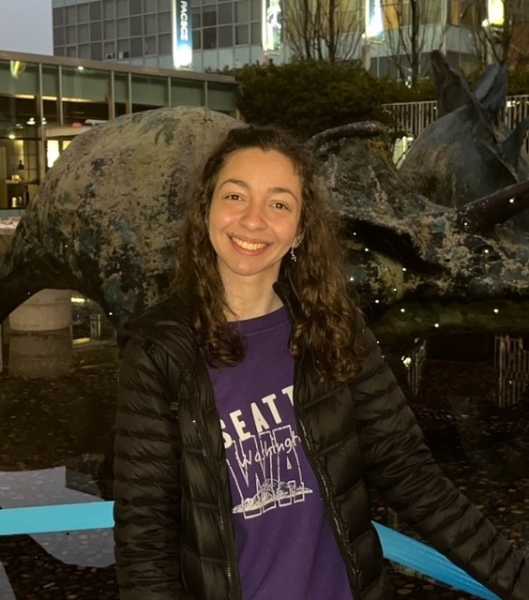
Larissa G. Capella, Live Science contributor
Larissa G. Capella is a science writer from Washington state. She earned a BA in physics and a BA in English literature in 2024, allowing her to pursue a career that combines both disciplines. She writes primarily about ecology, earth science, and physics, but is always willing to write about any science that sparks her interest. Her work has appeared in Eos, Science News, Space.com, and more.
You must verify your public display name before commenting.
Please log out and log back in. You will then be prompted to enter a display name.
Exit Read more
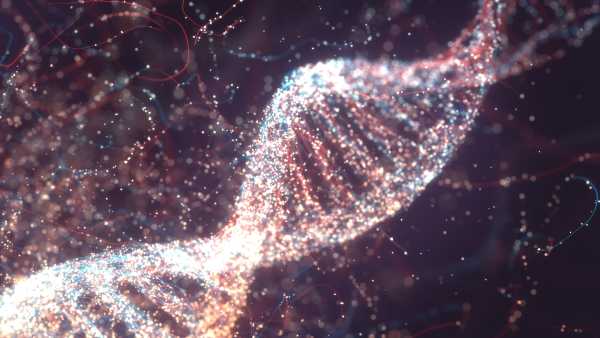
Scientists have discovered how viruses hidden in our DNA control our genes
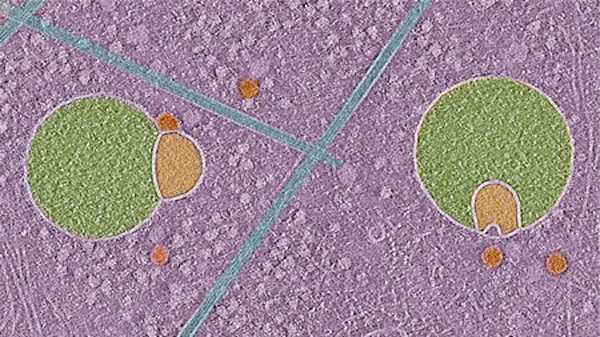
Scientists have discovered a previously unseen part of human cells

New study confirms that race and genetics do not mix
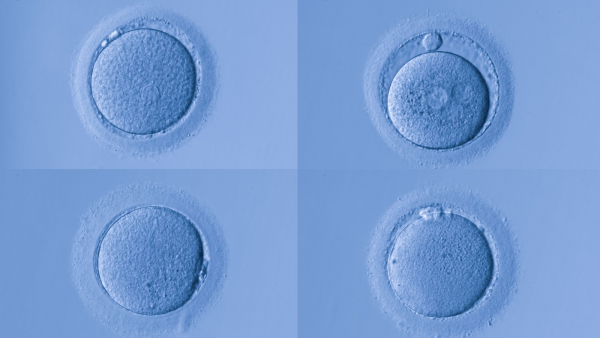
Special protection could help human eggs stay fresh as the body ages
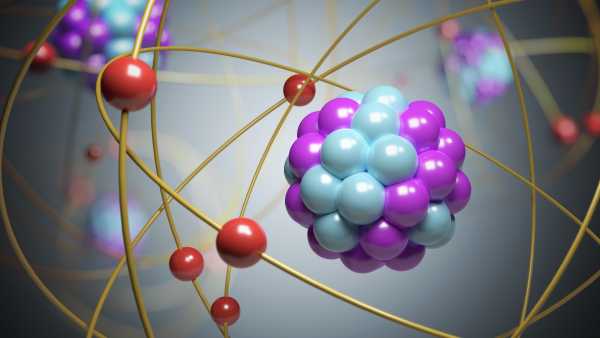
Why is the nucleus of an atom not round?

8 genomic hotspots linked to ME/CFS in largest study of its kind. Latest genetics news

Special protection could help human eggs stay fresh as the body ages

8 genomic hotspots linked to ME/CFS in largest study of its kind
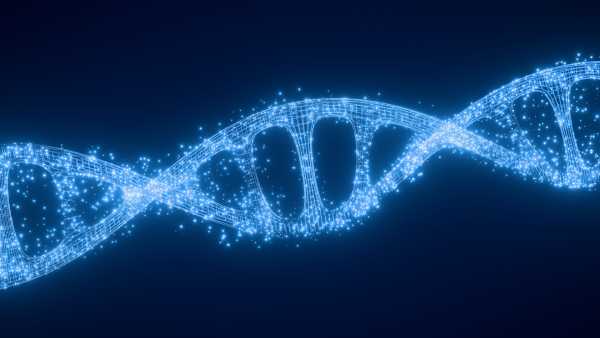
Scientists claim humans may have untapped 'superpowers' in hibernation-related genes
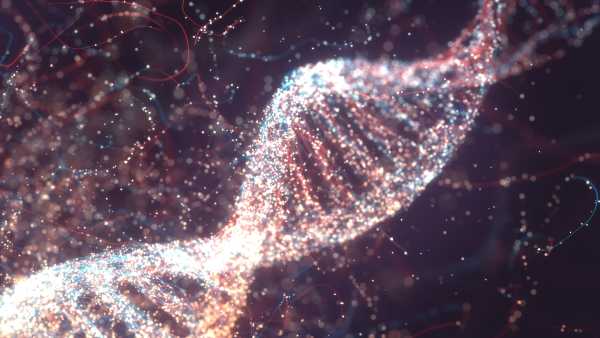
Scientists have discovered how viruses hidden in our DNA control our genes
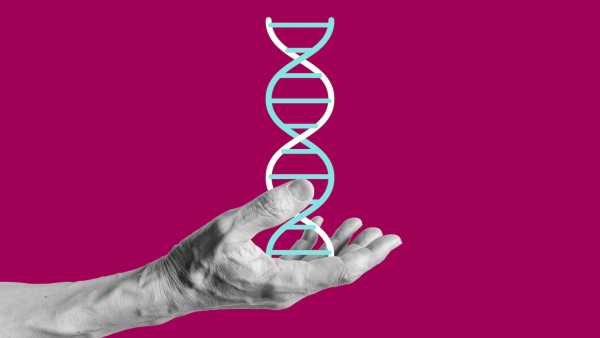
Best-ever human genome map reveals 'hidden' regions of DNA
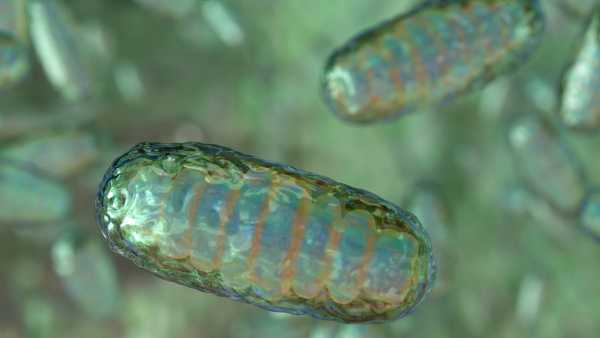
8 Babies Saved From Potentially Deadly Inherited Diseases Thanks to New IVF Trial With 'Mitochondrial Donation' Latest News
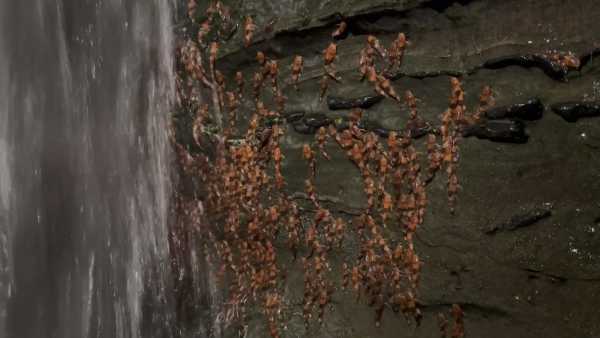
Thousands of bumblebee catfish climb a waterfall in never-before-seen footage
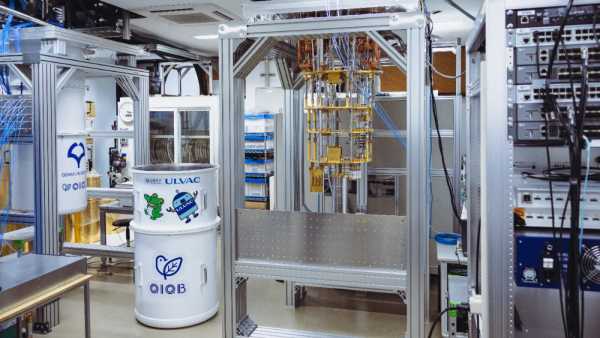
Japan launches its first domestically produced quantum computer
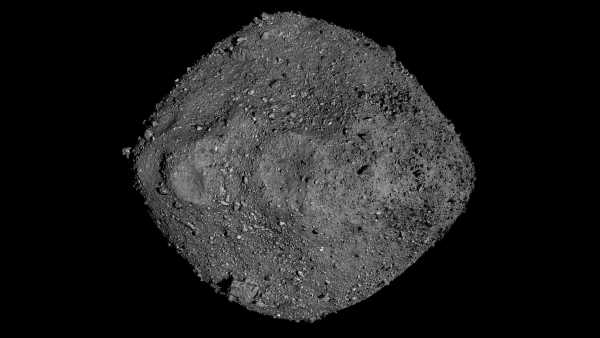
The Bennu sample contains dust that is older than the solar system itself.

China has attempted the first pig-to-human lung transplant in a brain-dead person

'Mini Brains' Reveal Secrets of Formation of Key Brain Cells in the Womb
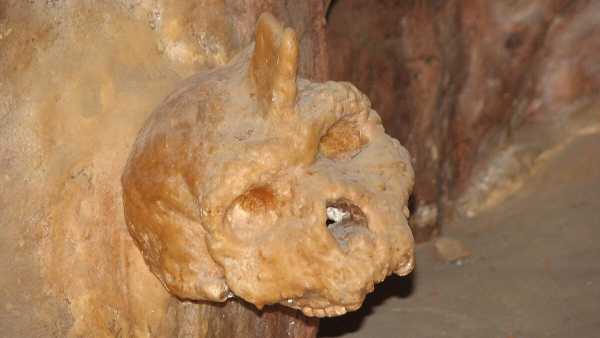
Mysterious 300,000-year-old skull from Greek cave was neither human nor Neanderthal, study finds LATEST ARTICLES
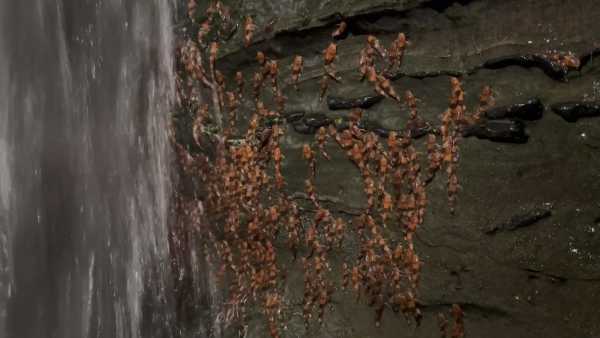
1Thousands of bumblebee catfish climbing a waterfall are captured in previously unseen footage
Live Science is part of Future US Inc., an international media group and leading digital publisher. Visit our corporate website.
- About Us
- Contact Future experts
- Terms and Conditions
- Privacy Policy
- Cookie Policy
- Accessibility Statement
- Advertise with us
- Web Notifications
- Career
- Editorial Standards
- How to present history to us
© Future US, Inc. Full 7th Floor, 130 West 42nd Street, New York, NY 10036.
var dfp_config = { “site_platform”: “vanilla”, “keywords”: “type-news-daily,serversidehawk,videoarticle,van-enable-adviser-
Sourse: www.livescience.com





